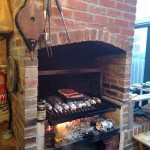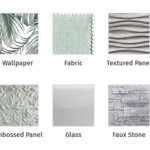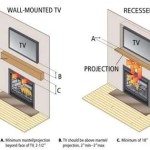Understanding Gas Fireplace Insulated Vent Covers
Gas fireplaces offer a convenient and aesthetically pleasing heating solution for many homes. However, their venting systems can be a source of energy loss, potentially increasing heating costs and impacting overall energy efficiency. To mitigate this, gas fireplace insulated vent covers have emerged as a viable solution. This article explores the function, benefits, and considerations associated with gas fireplace insulated vent covers, offering a comprehensive understanding of their role in maximizing the efficiency of gas fireplace systems.
Gas fireplaces, unlike traditional wood-burning fireplaces, rely on a dedicated venting system to expel combustion byproducts such as carbon dioxide and water vapor. These venting systems, often constructed of metal, can conduct heat away from the home, particularly during cold weather. This heat loss can lead to increased energy consumption as the heating system works harder to maintain a consistent temperature. Furthermore, uninsulated vents can contribute to condensation problems within the vent pipe, potentially leading to corrosion and reducing the lifespan of the venting system.
An insulated vent cover is designed to address these issues by providing a layer of thermal insulation around the exterior vent pipe. This insulation minimizes heat transfer, keeping the heat inside the home and preventing cold air from entering through the vent. The result is improved energy efficiency, reduced heating costs, and a more comfortable indoor environment. Selecting the appropriate insulated vent cover requires careful consideration of several factors, including the type of venting system, the local climate, and the desired level of insulation.
The Function of Insulated Vent Covers
The primary function of a gas fireplace insulated vent cover is to reduce heat loss through the vent pipe. This is achieved by creating a thermal barrier between the hot exhaust gases within the vent and the cold outdoor air. The insulating material used in the cover inhibits the transfer of heat via conduction and convection. Conduction refers to the transfer of heat through a solid material, while convection involves the transfer of heat through the movement of fluids (air in this case). By minimizing these heat transfer mechanisms, the insulated vent cover helps to retain heat within the home.
Furthermore, insulated vent covers can prevent backdrafts. Backdrafts occur when cold air enters the vent pipe and pushes exhaust gases back into the home, creating a potentially hazardous situation. The insulation helps to maintain a more stable temperature within the vent, reducing the likelihood of cold air infiltrating the system and causing a backdraft. This is particularly important in homes with negative pressure, where the exhaust from the fireplace is pulled back into the house due to other ventilation systems.
Another crucial function of the insulated vent cover is to prevent condensation. Exhaust gases from gas fireplaces contain water vapor, which can condense on the cold surfaces of the vent pipe, particularly in uninsulated systems. This condensation can lead to corrosion and premature failure of the vent pipe. The insulation helps to keep the vent pipe warmer, reducing the likelihood of condensation and prolonging the life of the venting system. The type of insulation used often incorporates a vapor barrier to further prevent moisture from reaching the metal components of the vent.
Benefits of Using Insulated Vent Covers
The benefits of using insulated vent covers extend beyond simple heat retention. Improved energy efficiency is a significant advantage. By minimizing heat loss through the vent, the heating system requires less energy to maintain a comfortable indoor temperature. This translates to lower heating bills and a reduced carbon footprint. Studies have shown that insulated vent covers can significantly reduce energy consumption, especially in colder climates.
Increased comfort is another notable benefit. Minimizing heat loss through the vent helps to maintain a more consistent temperature throughout the home. This can eliminate cold drafts and improve overall comfort levels, particularly in rooms adjacent to the fireplace. In addition, the prevention of backdrafts ensures that the air quality within the home remains healthy and safe.
Prolonged lifespan of the venting system is a long-term benefit. By preventing condensation and corrosion, the insulation helps to extend the life of the vent pipe. This can save homeowners significant money on replacement costs over time. Venting systems are a critical safety component of gas fireplaces, and maintaining their integrity is essential for the safe operation of the appliance. Insulated vent covers contribute to the longevity and reliability of the venting system.
Ease of installation and maintenance is another consideration. Many insulated vent covers are designed for easy installation, allowing homeowners to install them themselves without the need for professional assistance. However, it is always recommended to consult with a qualified professional if there are concerns about the installation process. Once installed, vent covers typically require minimal maintenance, making them a convenient and cost-effective solution for improving the efficiency and safety of gas fireplaces.
Key Considerations When Choosing an Insulated Vent Cover
Selecting the appropriate insulated vent cover requires careful consideration of several factors. The type of venting system is a primary consideration. Gas fireplaces typically use either B-vent or direct-vent systems. B-vent systems draw combustion air from inside the home and vent exhaust gases through a vertical vent pipe. Direct-vent systems draw combustion air from outside the home and vent exhaust gases through a coaxial vent pipe. The insulated vent cover must be specifically designed for the type of venting system in use.
The climate in which the home is located is another important factor. Colder climates will require a higher level of insulation to effectively minimize heat loss. The R-value of the insulation, which measures its resistance to heat flow, is an important indicator of its insulation performance. A higher R-value indicates better insulation. It is crucial to choose an insulated vent cover with an R-value appropriate for the local climate.
The material of the vent cover is also an important consideration. The cover should be made of durable, weather-resistant materials that can withstand the elements. Common materials include aluminum, stainless steel, and plastic. The insulation material itself should also be durable and resistant to moisture. Fiberglass, mineral wool, and foam are common insulation materials used in vent covers. It's imporant to verify that the product is specifically designed for use with a Gas fireplace venting system and is compliant with relevant safety standards.
It is also advisable to consider the aesthetic appeal of the vent cover. While the primary function of the cover is to provide insulation, it is also visible from the exterior of the home. Choose a vent cover that complements the architectural style of the home and enhances its overall appearance. Many vent covers are available in a variety of colors and styles to suit different preferences.
Finally, safety should always be a top priority. Ensure that the insulated vent cover is designed to prevent the accumulation of flammable materials near the vent. The cover should also be properly secured to the vent pipe to prevent it from falling off or creating a hazard. Regular inspection of the vent cover is recommended to ensure that it remains in good condition and is functioning properly.
In summary, gas fireplace insulated vent covers offer a practical and effective solution for improving the energy efficiency, comfort, and safety of gas fireplace systems. By understanding the function, benefits, and considerations associated with these covers, homeowners can make informed decisions and select the appropriate product for their needs.

Termination Cap Cover For Direct Vent Fireplace Draft Stopper

Fireplace Vent Cover Magnetic Draft Stopper Temu

Termination Cap Cover For Direct Vent Fireplace Draft Stopper

Turbro Magnetic Fireplace Cover 39 W X 32 H Draft Blocker Indoor Vent Insulation Stopper Prevent Heat And Cold Air Loss Fits For Iron Brick Frame With Sticky

Majestic Quartz Direct Vent Gas Fireplace 42 Woodland

Empire White Mountain Hearth Wall Thimble Cover Sd46dvadc Fireplaces Usa

Napoleon Vector 50 Gas See Through Fireplace Direct Vent Rockford Chimney

Termination Cap Cover For Direct Vent Fireplace Draft Stopper

Superior 36 Traditional Wood Burning Fireplace Us

Fireplace Vent Cover Magnetic Draft Stopper Temu
Related Posts








